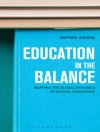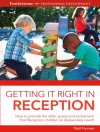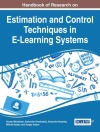Urban residential integration is often fleeting—a brief snapshot that belies a complex process of racial turnover in many U.S. cities. White Flight/Black Flight takes readers inside a neighborhood that has shifted rapidly and dramatically in race composition over the last two decades. The book presents a portrait of the life of a working-class neighborhood in the aftermath of white flight, illustrating cultural clashes that accompany racial change as well as common values that transcend race, from the perspectives of three different groups who are living it: white stayers, black pioneers, and ‘second-wave’ blacks.
Rachael A. Woldoff offers a fresh look at race and neighborhoods by documenting a two-stage process of neighborhood transition and focusing on the perspectives of two understudied groups: newly arriving black residents and whites who have stayed in the neighborhood. Woldoff describes the period of transition when white residents still remain, though in diminishing numbers, and a second, less discussed stage of racial change: black flight. She reveals what happens after white flight is complete: ‘Pioneer’ blacks flee to other neighborhoods or else adjust to their new segregated residential environment by coping with the loss of relationships with their longer-term white neighbors, signs of community decline, and conflicts with the incoming second wave of black neighbors.Readers will find several surprising and compelling twists to the white flight story related to positive relations between elderly stayers and the striving pioneers, conflict among black residents, and differences in cultural understandings of what constitutes crime and disorder.
Cuprins
Introduction: What Happens to a Neighborhood after White Flight?
1. The Parkmont Environment
2. Choosing Parkmont: Whites Staying and Blacks Pioneering
3. Stella Zuk’s Story: Choosing to Stay
4. Cross-Racial Caregiving: Pioneers Helping Stayers to Age in Place
5. Ken Wilkinson: Striving for the Next Generation
6. Black Flight: Consequences of Neighborhood Cultural Conflict
7. Billy’s Narrative: Clashing in Parkmont
8. Skipping School: The Negative Effects of a Neighborhood Institution
9. Conclusions: Understanding the Cultural Dynamics of Neighborhood ChangeAppendix
References
Index
Despre autor
Rachael A. Woldoff is Associate Professor of Sociology at West Virginia University. She is coauthor of High Stakes: Big Time Sports and Urban Redevelopment.












